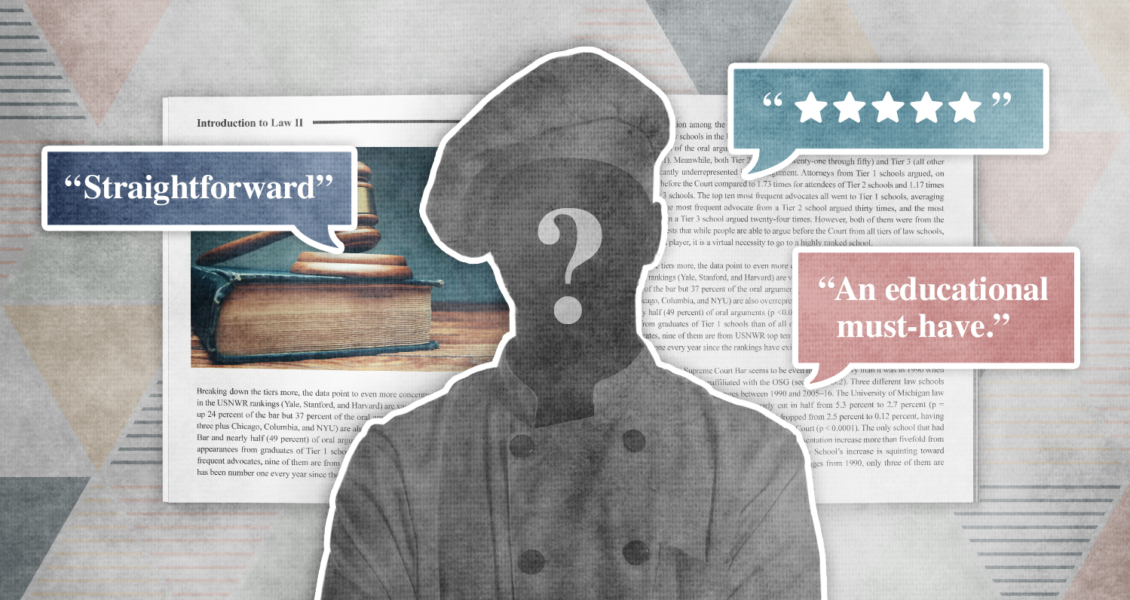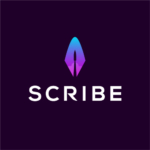The day your book launches will be one of the most exciting parts of publishing your book.
After months of hard work, you’ll finally get to hold the book in your hands—and more importantly, you’ll get to share your ideas with the readers who need them.
But let’s be clear: a successful book launch doesn’t just “happen.”
If you want the most successful launch possible, you have to put in work beforehand to promote your upcoming book.
You’ll need endorsements, media coverage, and reviews to drum up interest and spread awareness. This will allow you to reach a critical mass within your target audience (which, in turn, will give you plenty of word-of-mouth advertising).
In order to get all of that ready before your launch, you’ll need galley copies of your book. These are sometimes called advance reader copies or advance review copies (ARCs).
This article is your guide to galley copies. I’ll explain:
- what they are
- what their purpose is
- how to get one
- how to send them to the people who will help with your book marketing
What Is a Galley Copy?
A galley copy is an advance copy of your book. It’s not a completely finalized version, but it’s close enough to send to readers for promotional purposes.
Usually, galley copies are the version of your book that comes right before the final proofreading. That’s why people sometimes refer to them as “uncorrected proofs.”
It may seem odd to send your book out before it’s perfect, but it’s an essential part of the process. It gives reviewers, blurb-writers, and media outlets time to evaluate your book before it’s published.
Bloggers, influencers, and media outlets receive many new books, so they need time to decide if—and how—they want to feature yours.
Galley copies are also important if you want to seed Amazon reviews during your launch week. The more reviews you can get during your launch week, the better.
Book reviews matter. They’re a key influencer of buying behavior.
Think about it. When was the last time you bought a book without reading a review?
Galley copies allow you to send your book to select readers so they’ll be ready to submit early reviews the day your book appears on Amazon.
Note: Authors and book publishers often send electronic advance reading copies, but ARCs can also be printed. An Authors’ choice usually depends on how far along they are in the publication process—and, of course, on cost.
How Can You Get Galley Proofs?
Because galley copies are used for reviews, endorsements, and media interest—all of which can have a long turnaround time—you want to start sending them out early.
If it’s very early in the process, you might not have print copies available yet. In that case, you can make a pdf of the uncorrected proof of the manuscript.
BUT—and this is very important—do not send out proofs of your first draft. Don’t even send out proofs of later drafts if you’re still tinkering with the content.
Every book goes through multiple stages of editing. If you’re still working on your book’s ideas, content, or sentence structure, it’s not ready to be sent out. You don’t want someone reviewing a draft that will significantly change.
Once you have a finished manuscript—completely finished—it will go to a copyeditor. Their job is to find any spelling, punctuation, and grammar mistakes.
Once your manuscript has been copyedited, it will go to a proofreader. They will find all the minor mistakes the copyeditor missed (because even the most eagle-eyed editors miss some mistakes).
I recommend waiting until your book has been copyedited to put together a galley copy. That way, you won’t send important readers a book riddled with spelling and grammar mistakes.
When reviewers and media receive advance review copies, they expect there to be a few mistakes. But there’s a big difference between an uncorrected proof and an unedited proof. The first is fine; the second is very, very bad.
If you have enough lead-time, you can even wait until the proofreading is complete before you send your book out for review.
Doing that will give you a unique advantage. You can upload your final, publication-ready manuscript (with its final book cover) to Amazon’s Kindle Direct Publishing (KDP) and order Author print-on-demand copies before the publication date.
Consider sending print galley proofs instead of electronic ones to potential endorsers, media, and other influencers. People often feel more obliged to read and share a print book.
You can even include a business card, bookmark, or other promotional items with print galleys to help them stand out.
But even if you have access to print galley copies, don’t go overboard. The pdf version is fine for friends, family, or anyone whose mailing address you can’t get.
Should You Watermark Your Electronic Proofs?
No. Watermarks are a thing of the past.
In case you don’t know, watermarks are pale text that appear across every page. For example, each page might say “PROOF.”
You usually see watermarks when a printer sends you page proofs to review before ordering the full print run.
Don’t send that out to anyone. It’s clunky, and it makes the copy hard to read.
People often think of watermarking as a security measure, but nowadays it’s easy to remove watermarks. Plus, if you’re sending it to friends and family, you trust them—so it’s not worth bothering.
And if you’re sending it to professionals for endorsements, etc., you don’t want to insult their integrity.
If anything, you actually want influencers to feel comfortable sending it to other influencers who might be interested in your book.
So don’t watermark your galley copy.
What you should do if you’re sending an uncorrected proof is include a statement to that effect.
On the front page, write, “This is an uncorrected advance reader copy. Check with the Author before quoting this text.”
This prepares readers for any minor mistakes they may find. It also prevents those mistakes from making it into any media coverage.
Who Should You Send Galley Copies To?
1. Friends and Family
Your friends and family will likely read your published book, so why would you want to send it to them in advance? To seed your reviews before your actual book launch.
I recommend putting together a list of 30-50 trusted friends, family, colleagues, or clients. Send them an ARC 1 month before your book launches.
Let them know that you’ll be asking them to leave a review as soon as the book is available on Amazon. Then, on your launch day, send them a reminder.
If you have more than 50 people you trust to review the book, send out as many advance copies as you want.
This is a quick and ethical way to grow the number of reviews on your book’s Amazon page during the early stages of its release.
You’re giving readers plenty of time to read the book (instead of suggesting they blindly comment on a book they haven’t read—which is never a good idea).
2. Centers of Influence
Before you wrote your book, you should have determined your book positioning.
That means you already have a clear idea of who your target audience is—the group of people that share the specific problem your book solves.
When you’re determining who to send galley copies to, think about the centers of influence in that audience. Who are the go-to people your audience listens to?
They are the ideal people to blurb, review, or share your book.
It’s best if you actually know them because they’re more likely to follow through. But you can also focus on high-value acquaintances or a few high-value longshots whose target audience matches yours.
The key words there are “whose target audience matches yours.”
I’m not suggesting you cold-call Oprah or Joe Rogan. Be honest. Their target audience isn’t the same as yours.
Who, realistically, will appreciate your book and want to share it with their followers? Who will help it grow by word of mouth?
The real riches—and your core audience—are in the niches.
Centers of influence in your audience might be a law firm, a coach, a client, a moderator of a large, private Facebook group, an influencer—anyone you want to take a specific action during the week of your launch to promote your book.
When you send the advance reader copy, be clear about that specific action.
What is your ask? Do you want them to post it to their Facebook group on the day of the launch? Broadcast it on all their social media accounts? Include it in their newsletter? Email their clients?
Be direct and clear about what support you’d like to receive.
3. Potential Endorsers
Endorsements can help raise awareness of your book and lend it credibility.
But they aren’t necessary to launch a successful book, and ineffective endorsements aren’t worth the effort.
If you’re going to ask someone to endorse your book, make sure you’re asking the right people.
An effective endorsement is from anyone who’s either:
- instantly recognizable to your target audience or
- whose credentials are both impressive and directly related to your book.
For example, if you know an Olympic athlete, they’d be a great choice if you wrote a fitness book. But if you wrote a book on investing, those impressive credentials wouldn’t mean much.
Think about it from the perspective of a potential reader. When they look at your book cover and see an endorsement, it should be a real selling point. It should convince them that you’re trustworthy and have the backing of experts.

You don’t want them to wonder, “Who is this random person?” or, “Why is a Michelin-chef giving the thumbs up on a book about law?”
For more information on how to get effective endorsements that will help convince readers your book is worthwhile, see this post.
Final Thoughts
Once you’ve sent out your galley copies, remember to follow up on your requests with potential reviewers, influencers, and endorsers.
If they agree to promote the book, make sure to express your gratitude, and send reminders when the time comes for them to follow through on your ask.
It’s also beneficial to build ongoing relationships with the influencers who connected with your book. Be sincere, follow up, and stay top of mind. Become the expert they turn to.
Remember, this is about building connections, not about simple transactions or growing your book’s sales numbers. Keep your eye on your long-term goals, and focus on creating a community around your ideas.


